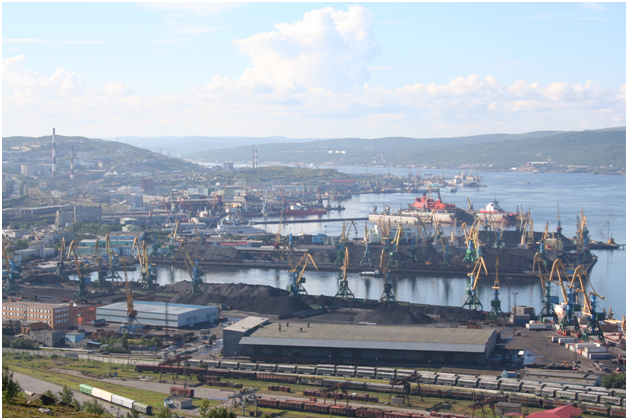Today, I am going to continue blogging about illegal dumping of wastes in Russia. There is a Russian Naval base at Murmansk on the Arctic Sea. Dumping nuclear waste into the world's oceans has been banned by international treaty for over thirty years. It has been know for decades that the Soviet Union and Russia have been illegally dumping nuclear materials into the Arctic Sea. Because of Cold War secrecy, the exact quantities and types of nuclear materials are not completely known.
Yesterday, I blogged about the Soviet and Russian practice of dumping the effluent from the nuclear weapons factory near Chelyabinsk into the River Techa. The Techa empties into the Arctic Sea and much of the radioactive contamination from Chelyabinsk wound up in there.
The Naval base at Murmansk services nuclear powered surface vessels and submarines. Between 1964 and 1986, over seven thousand tons of solid radioactive waste and fifty six thousand cubic feet of liquid waste was dumped into the Arctic Sea. In addition, at least eighteen nuclear reactors from Soviet and Russian nuclear submarines and nuclear icebreakers were sunk in the Arctic Sea off of Murmansk. A nuclear sub was intentionally sunk off Murmansk after an accident in 1968. In addition, another Soviet nuclear sub sank three hundred miles off of Norway. That sub contained two nuclear reactors and two nuclear warheads. In 1993, the Russians admitted that a Russian ship discharged nine hundred tons of radioactive water from decommissioned nuclear subs.
A curie is a measure of radioactivity from decaying radioactive isotopes. A single curie could be sufficient to kill someone with prolonged exposure. It is estimated that between 1953 and 1991, the Soviet Union dumped over three hundred thousands of curies into the Arctic Sea. Experts maintain that radioactive materials that are dumped at sea need to be at least three thousand feet below the surface in order for it not to be a threat. Much of the dumped Soviet and Russian waste is in shallower water and a danger to the food chain.
Norway in particular is very concerned about the potential damage to prime fishing grounds in the Arctic Sea. IN 1993, Arctic Sea seals began dying of blood cancer. Since seals are near the top of the food chain, this suggests that a lot of fish are contaminated. There may be a threat to human beings eating fish from that area. Norway and other Scandinavian countries depend of fish from the Arctic Sea to feed their own people and for export sales.
Russia has responded to international outrage over their dumping practices in the Arctic Sea by claiming that they are running out of places on land to dump nuclear waste and they will have to keep dumping nuclear waste into the Arctic Sea unless the international community provides funding for other waste disposal alternatives. I guess this could be referred to as "nuclear blackmail."
Murmansk on the Arctic Sea:
